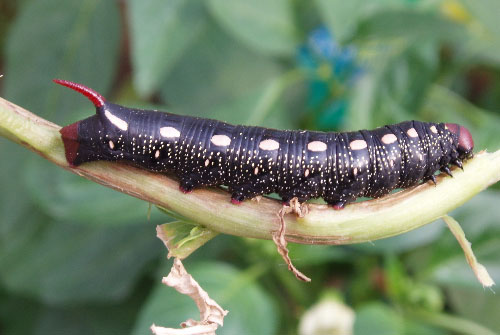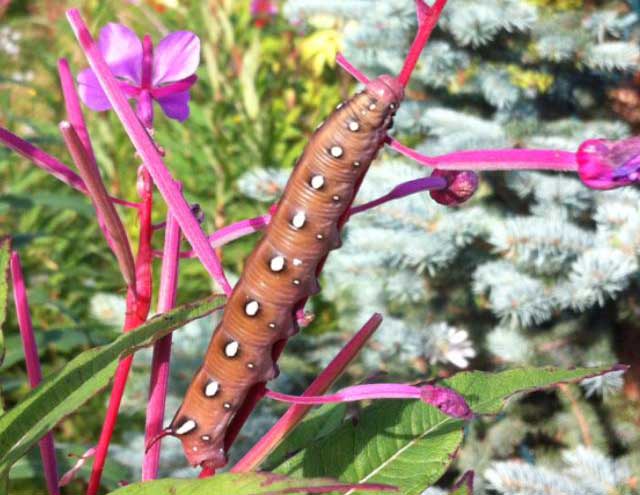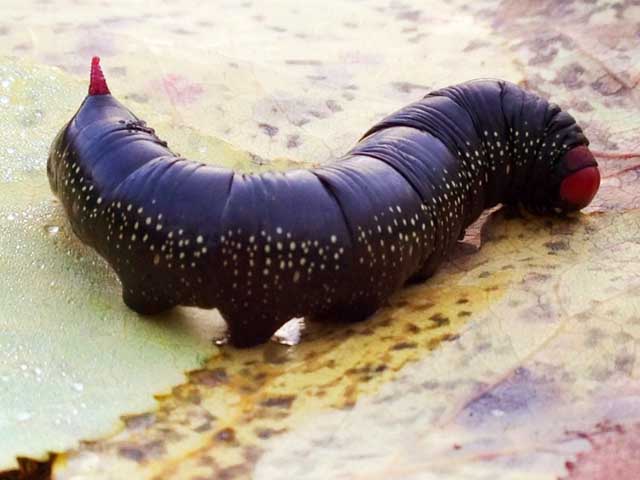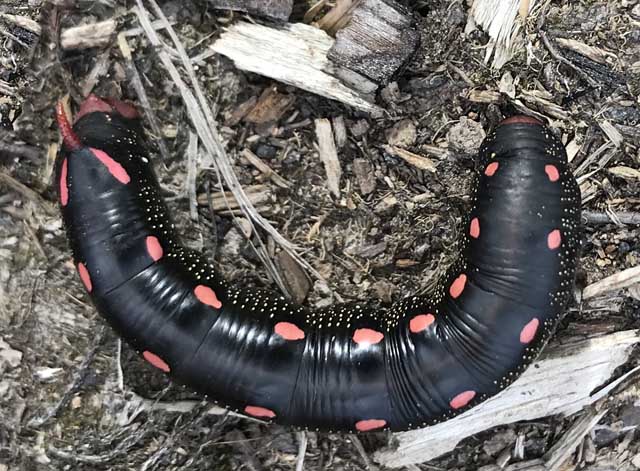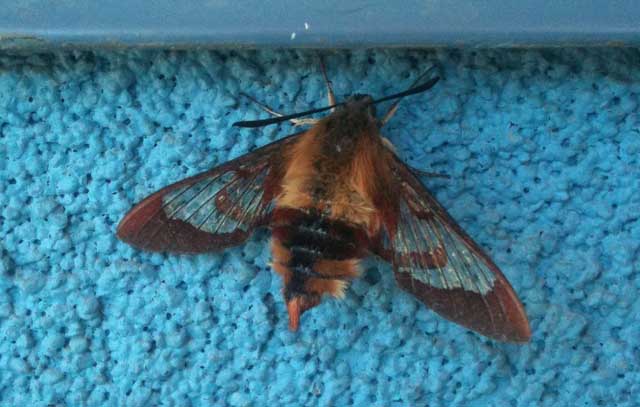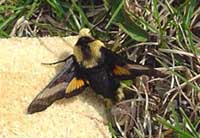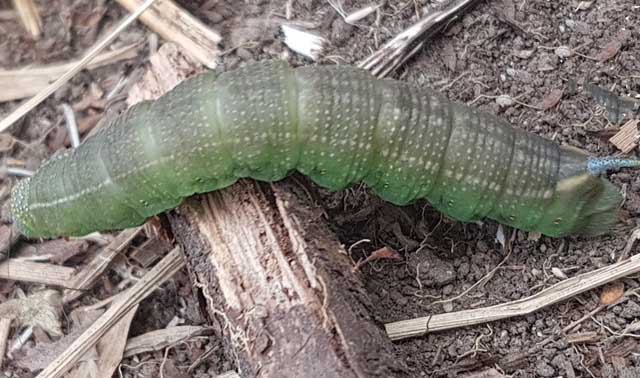 |
Smerinthus cerisyi
WO,
Cerisy's Sphinx;
Pale green, granular skin, pale lateral diagonal lines, faint red
spiracular circles, very pale longitudinal lines running from head to more pronounced anal diagonal line.
Ggreen heads bounded dorsally with pale yellow inverted V.
|
 |
Hemaris diffinis
USGS,
Snowberry Clearwing: Snowberry (Symphoricarpos),
honeysuckle (Lonicera), Coralberry, viburnums, Blue Dogbane
(Apocynum), dwarf bush honeysuckle (Diervilla lonicera).
Horn: black; yellow base.
|
 |
Hemaris thysbe
USGS, Hummingbird Clearwing:
Also an orangey-pink prepupal form. Lateral line runs
from S1 to the blue horn. Viburnum and related plants.
|
 |
Hyles gallii
WO/EMvAM/CS/DH/TH, the Bedstraw Hawk Moth
Gallium Sphinx:
Larvae come in black forms, with or without large white subdorsal ovals, and in brown forms and drab green forms.
Epilobium (fireweed).
|
Hyles gallii larva, Fairbanks, Alaska, August 4, 2010, courtesy of Kyle Campbell.
Hyles gallii larva on Epilobium, Delta Junction, Alaska, August 8, 2005,
courtesy of Danielle (Ellie) Mason via Andrea Mather.
Hyles gallii larva, near Wasilla, Alaska; 61d37m north, 149d23m49s west; feeding on fireweed;
September 18, 2011; Carl Seutter
Hyles gallii larva, Anchorage, Alaska; 61° 8'10.09"N Latitude and 149°46'27.07"W; September 24, 2011; Joel Adams
Hyles gallii fifth instar, Pt. MacKenzie, Alaska, September 24, 2012, courtesy of Dave Helgert.
Hyles gallii, larva, Anchorage, Alaska, August 7, 2013, Ted Haussner.
Hyles gallii, larva, Prince William Sound, Esther Island, Alaska, August 15, 2013, Kristin Beck.
Hyles gallii, Shrine of St. Therese, Juneau, Alaska, August 7, 2013, Laurie Lamm.
Hyles gallii, larva, Soldotna, Alaska, October 4, 2018, Bryr Harris.
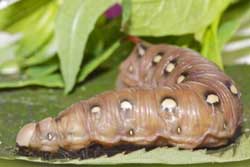 |
Hyles gallii
WO/KC/JS/MK, Bedstraw Hawk Moth,
Gallium Sphinx: Brown form from Fairbanks, Alaska, August 4, 2010, courtesy of Kyle Campbell.
Larva pupated within one week of being photographed. My understanding is that many forms can all originate from same female.
|
Hyles gallii fifth instar, Wasilla, Alaska, August 13, 2012, courtesy of Julie Stotts.
Hyles gallii fifth instar (greenish form), Willow Matanuska, Susitna Borough, September 1, 2013, courtesy of Merry Keene.
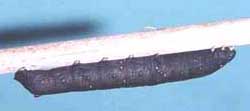 |
Proserpinus flavofasciata
WO, Yellow-banded Day Sphinx:
Larvae feed on willow weed (Epilobium) and possibly thimbleberry (Rubus parviflorus).
|
|
